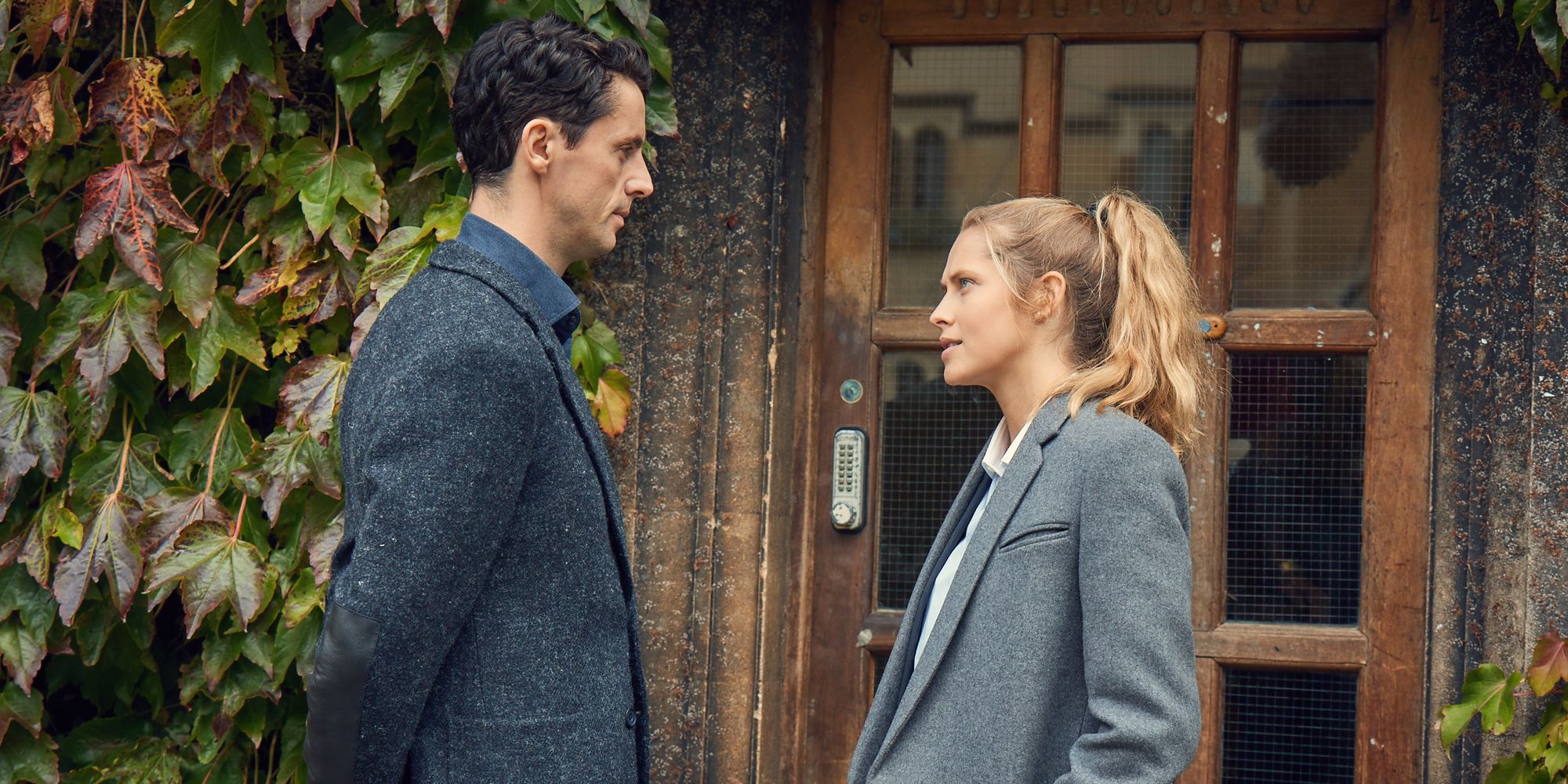A Discovery of Witches is taking on a new life after its addition to Netflix in the U.S, with its fantastical story prompting many viewers to wonder about the real history behind the series. The show offers a dramatic look at a world that has a secret supernatural underbelly, complete with longstanding political battles between witches, vampires, and daemons on their governing board, The Congregation. The show tackles very human themes through a supernatural lens, occasionally shedding some light on actual historical events. A perfect example of this is the School of Night.
The School of Night in A Discovery of Witches is explored when the show’s story travels back to Elizabethan England. After tragically losing her parents as a child (and being spellbound) prevents her magic from awakening until adulthood, Diana realizes she needs to learn to wield her powers wisely. As it turns out, she is one of the most powerful witches of all time. In order to learn to control these newfound powers, she decides to journey to the 16th century with Matthew to find the right teacher. Here, Matthew once lived as Matthew Roydon – a member of the real School of Night.
How A Discovery of Witches Ties In The School Of Night
One Of Matthew’s Many Identities Was Matthew Roydon
The School of Night was an Elizabethan-era group of poets, playwrights, and free thinkers, composed of Christopher Marlowe, George Chapman, Matthew Roydon and Thomas Harriot. It remains a mystery how well these men knew one another, but their similar beliefs first led Oxford historian Frederick S. Boas to categorize them together as The School of Night (via Michigan Quarterly Review). Queen Elizabeth I was the last monarch of the Tudor dynasty, and her reign was defined by divisions between Protestants and Catholics. The School of Night was originally called The School of Atheism, as their beliefs fell outside this traditional religious binary.
In A Discovery of Witches, Matthew de Clermont is a 1,500-year-old vampire who has taken on different identities throughout history to keep his supernatural secret, including the poet Matthew Roydon. In reality, Roydon was a poet known for his An Elegie, or Friends Passion, for His Astrophel, a poem written in remembrance of his late friend Sir Philip Sidney. It is also widely speculated that Roydon may have secretly authored Willobie His Avisa, a narrative poem that is believed to contain the first literary mention of William Shakespeare. This theory was popularized by historian Arthur Acheson, who believed Roydon used Henry Willobie as a pseudonym.
The Real History of The School of Night
Christopher Marlowe, Nicknamed Kit, Also Appears In A Discovery of Witches
The School of Night overall led an unprecedented charge in early modern literature, philosophy, and science. Christopher Marlowe, who also appeared in A Discovery of Witches played by Tom Hughes, was a playwright and poet who was widely known to rival Shakespeare. Known for his translations of the works of Ovid and his plays Tamburlaine, The Jew of Malta, and Doctor Faustus, Marlowe was a defining force in Elizabethan theater.
Little is known about Marlowe’s life, but historians have pieced together that he potentially worked as a spy for the crown, and may have identified as part of the LGBTQ+ community (via The Guardian). Despite a 20th century discovery of a coroner’s report on his death at 29 years old, his death is still widely regarded as mysterious, with some accounts being that he was murdered for his beliefs and others stating that he died in a bar fight.
Astronomer and mathematician Thomas Harriot, another member of the School of Night, reportedly discovered refraction (per NCAR). According to the First Colony Foundation, Harriot was among the first few English nobles to sail to the American south and meet with the indigenous Algonquin tribe of Roanoke Island. His discoveries changed the course of contemporary science, including his early illustrations of the moon.
Why The School Of Night Is Perfect For A Supernatural Show
The Group Is Still Surrounded By Mystery
Strange deaths and curious circumstances continue to shroud several members of the School of Night, making it the perfect historical school of thought for A Discovery of Witches to tap for supernatural inspiration because there is room for creativity. Mysterious deaths, pseudonyms, and rebellions against the norm have all been themes present in vampire literature, and the show’s choice to revisit this era in history was a highly intelligent one. The show is adapted from the All Souls series by author Deborah Harkness, who is also an accomplished historian.
Mysterious deaths, pseudonyms, and rebellions against the norm have all been themes present in vampire literature, and the show’s choice to revisit this era in history was a highly intelligent one.
The group’s very real history included a number of men who were willing to lay down their lives for what they believed in (Christopher Marlowe potentially being one of them). In a supernatural context, many of these actions would make sense coming from immortal beings, who would not always actually be risking death. A Discovery of Witches‘ referencing the School of Night was a complex historical fiction choice, making the show that much more interesting for viewers.
Sources: The University of Michigan, The Guardian, The University Corporation for Atmospheric Research, All Poetry, Willobie His Avisa, Oxford University Press
